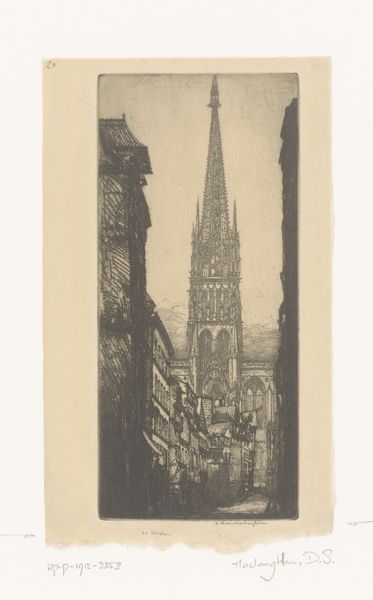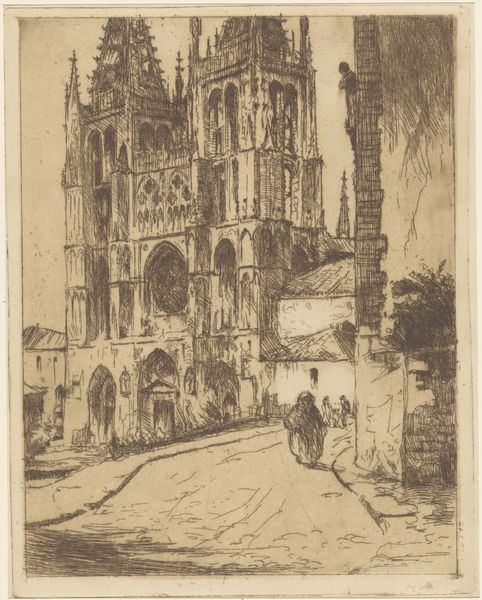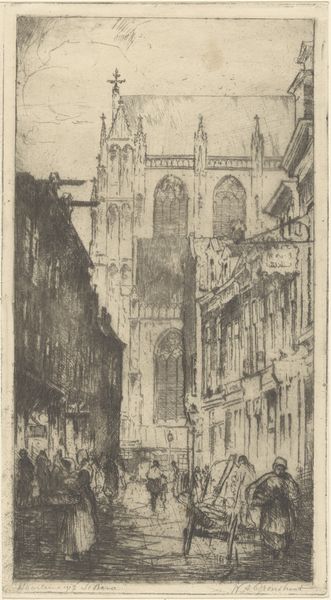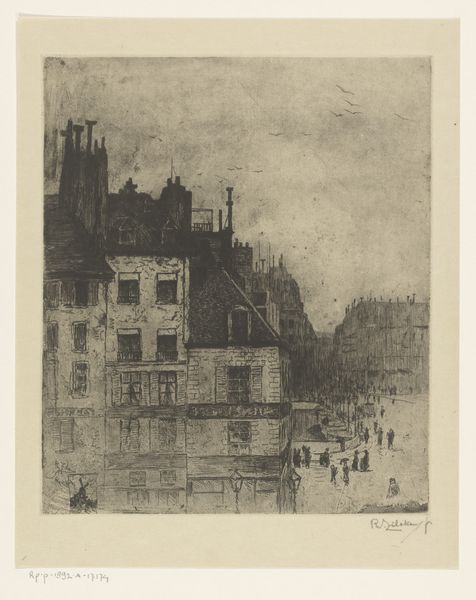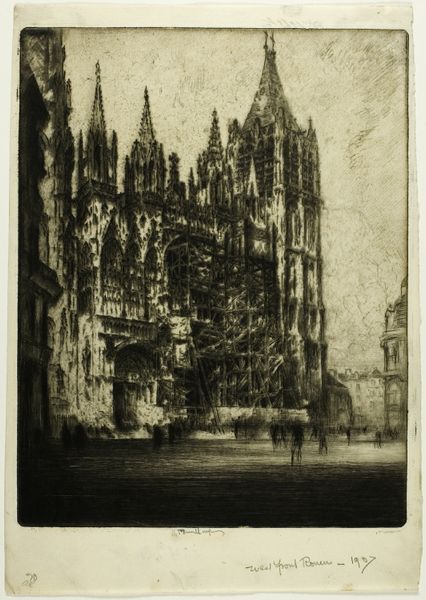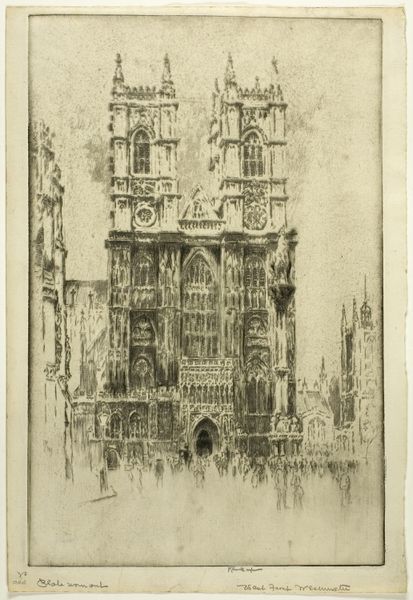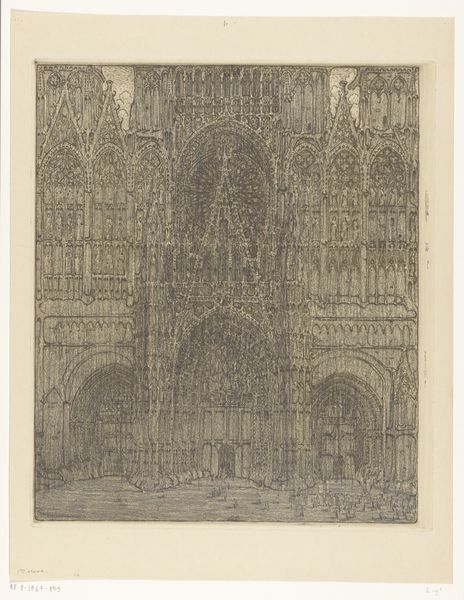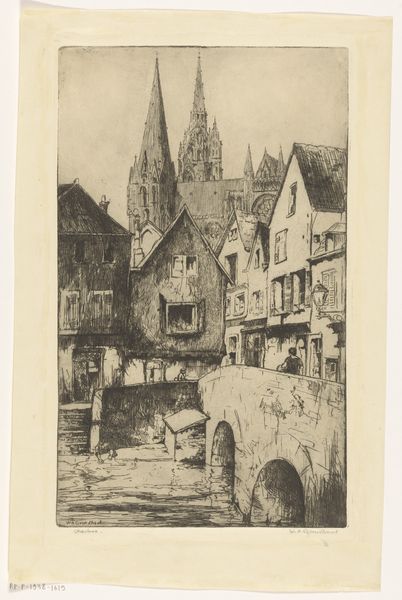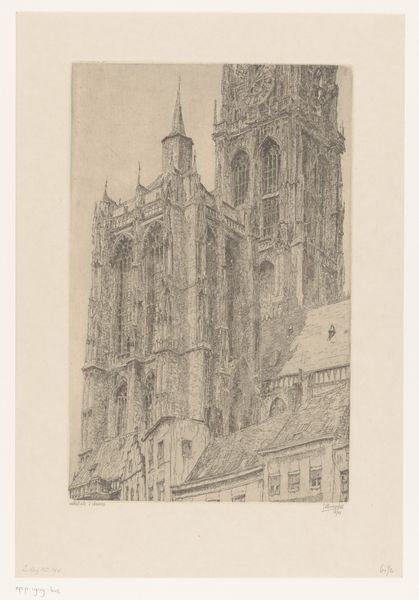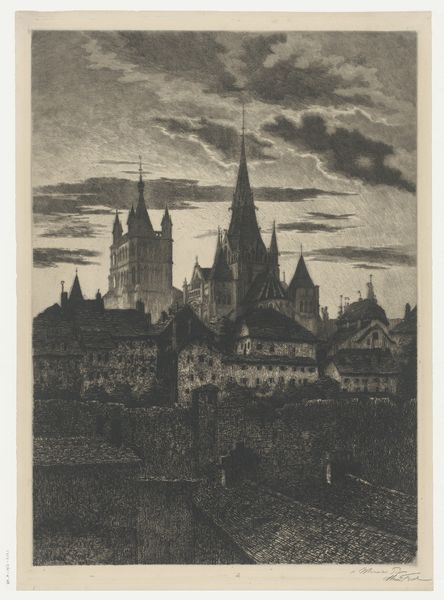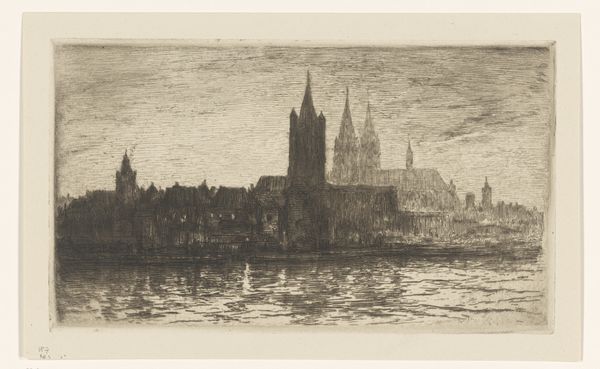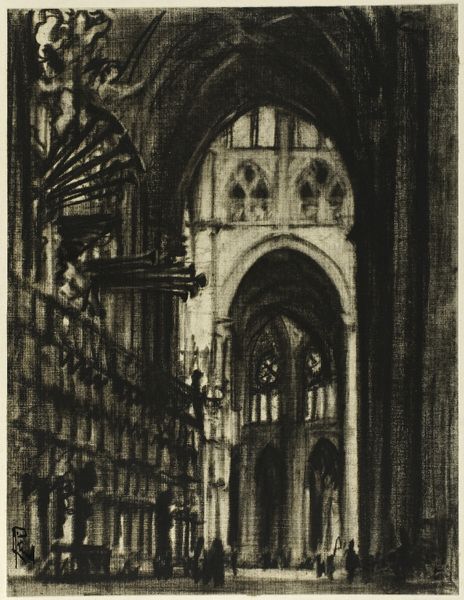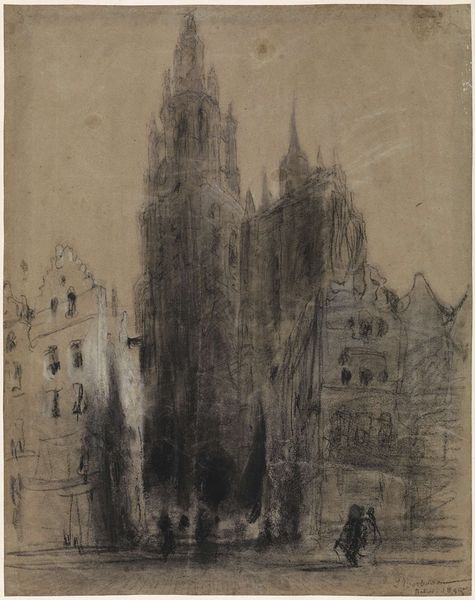
Dimensions: height 368 mm, width 428 mm
Copyright: Rijks Museum: Open Domain
Curator: Wijnand Otto Jan Nieuwenkamp's etching, "Voorgevel van de Onze-Lieve-Vrouwekathedraal in Rouen," created between 1910 and 1912, presents a fascinating view of the cathedral's facade. Editor: My first impression is of an incredible layering. The etching technique gives a density and almost suffocating feel to the stone and the scaffolding, a visual representation of time bearing down on this architectural giant. Curator: Absolutely. Nieuwenkamp was deeply interested in the role of architecture within a city's historical and cultural landscape. He wasn't merely documenting the building; he was engaging with its public presence, its relationship with the urban fabric around it. Editor: And the scaffolding itself becomes a critical material element! It isn’t hidden but rather aggressively displayed, raw and industrial against the ornate Gothic stone. This piece becomes about building as process, the labor involved in both creation and preservation. Curator: Precisely! The presence of the scaffolding challenges a romantic, idealized view of the cathedral. The artwork brings to the fore ideas around societal responsibility for architectural heritage. Are these acts of construction progress or destructive? Editor: This brings up the social implications tied to materials, too. The gothic stone and new materials speak to a specific place, to global economics of access and preservation and consumption – who benefits, who decides? Curator: Indeed. Nieuwenkamp positions us to think about who gets to participate in defining what is considered beautiful and worthy of protection within the broader context of evolving public values and cultural identity. Editor: And about the cultural labor needed for such acts! There is a beautiful tension here – that something deemed so valuable needs such rough support to persist. A great comment on our cultural values of "high" art, and how easily these depend on common physical, very visible, often obscured structures of making and maintenance. Curator: A poignant comment. Editor: I agree; it is not simply an image but an inquiry into what society chooses to commemorate.
Comments
No comments
Be the first to comment and join the conversation on the ultimate creative platform.
